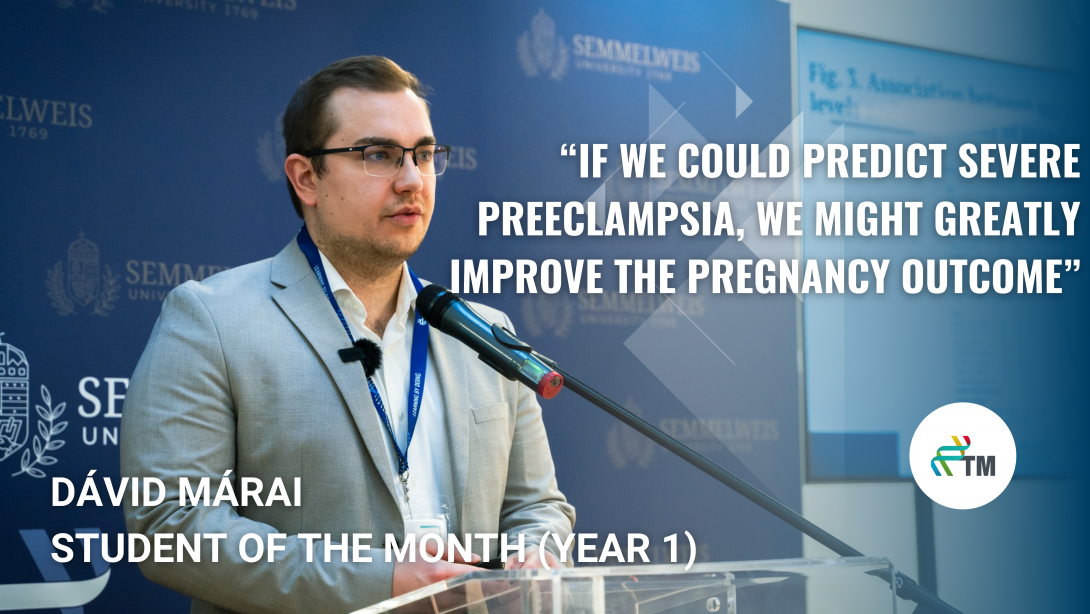
As a resident, he is very committed to scientific work and performs outstandingly in his project at CTM. He has already submitted his manuscript on microRNA and preeclampsia and will soon begin his second research project. In May, Dávid Márai was named Ph.D. student of the month (Year 1) at the Centre for Translational Medicine.
Dr. Márai is a third-year resident at the Department of Obstetrics and Gynecology, Semmelweis University, and had been thinking about starting a Ph.D. program for a long time. He was primarily interested in pregnancy pathology, as was his supervisor, Dr. Sándor Valent. „He was the one who drew my attention to the CTM training, for which I was happy to apply. The topic of microRNAs also originated from Dr. Valent. He has been collaborating with Dr. Zoltán Kukor from the Department of Molecular Biology for a long time, and they are jointly researching this field. Preeclampsia came into the picture because I had been interested in this condition for a long time, and I knew that there might be a connection between its development and microRNA-210 levels.”
Dr. Márai has just submitted his first paper to a renowned scientific journal. His meta-analysis shows that there is not only a correlation between microRNA-210 levels and the development of preeclampsia, but it is also a good predictor of its severity. This is an excellent finding because, although there are methods that might predict preeclampsia in pregnant women, their specificity is still weak. It could be improved by determining microRNA-210 levels.
„We believe that if we could predict severe preeclampsia, we might greatly improve the pregnancy outcome. For now, we know that microRNA-210 levels in the blood are more than three times higher than normal in mild preeclampsia and more than seven times higher in severe preeclampsia. Since it is clear that elevated microRNA levels are correlate with the severity, it would be important to investigate this topic in more detail and to define the biomarkers more clearly. This is what we would like to do in my second project.”
(Emese Szabó)